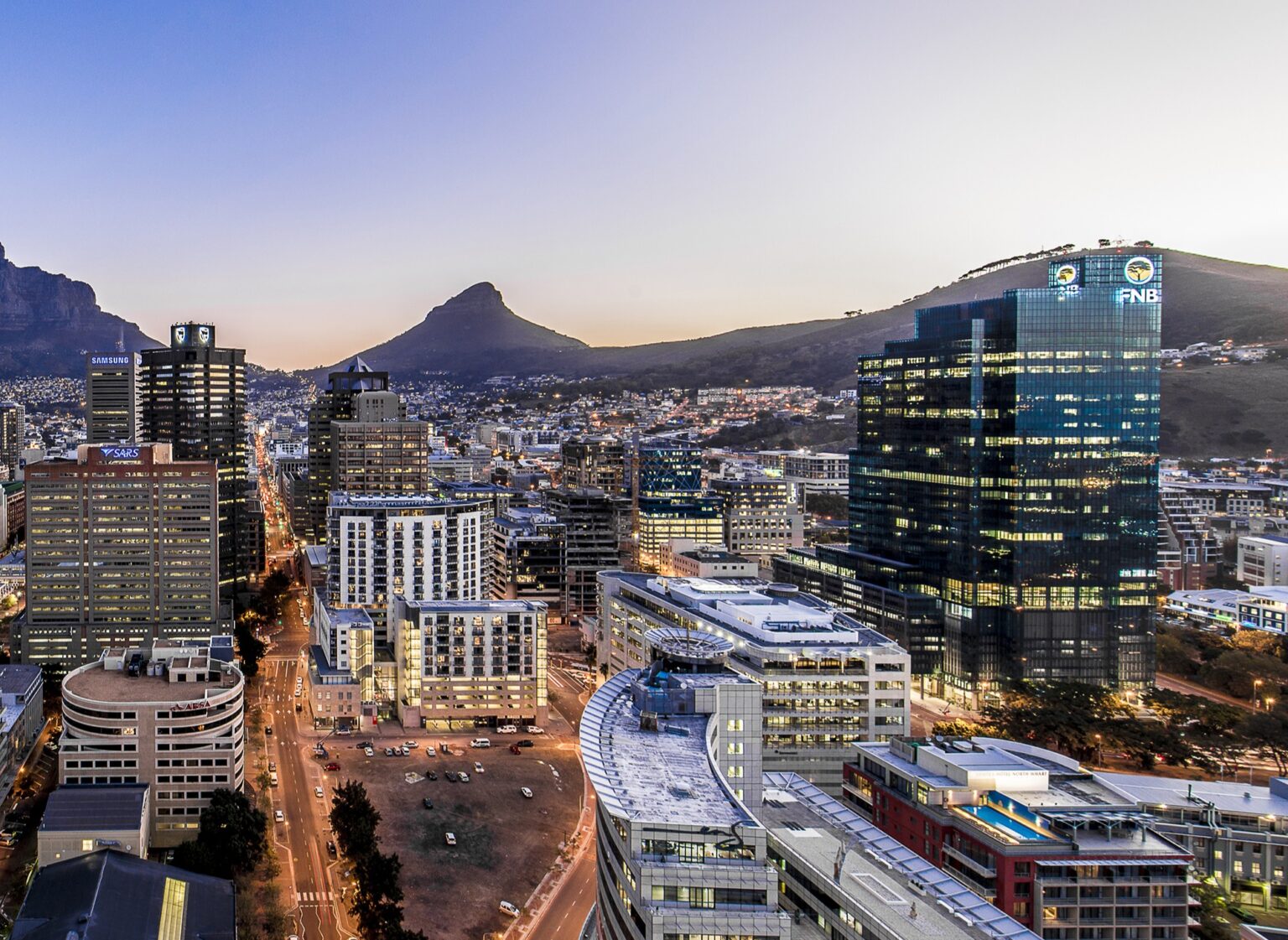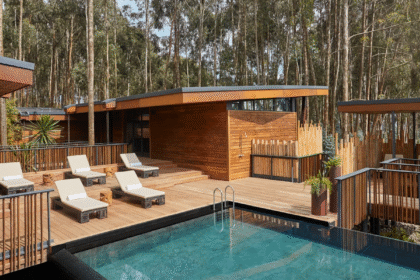At a Glance
- Portside Tower is Cape Town’s tallest building and home to FirstRand’s strategic regional hub.
- Delayed by the 2008 crisis, the project resumed with a scaled-down, sustainability-focused design.
- It’s South Africa’s first high-rise with a 5-Star Green Star rating for holistic environmental standards.
Rising with quiet confidence above Cape Town’s skyline and framed by the dramatic sweep of Table Mountain, Portside Tower is more than just glass and steel. It’s a landmark that reflects Cape Town’s identity, a blend of economic resilience, environmental intent, and corporate ambition. At its heart is FirstRand, Africa’s most valuable lender, whose presence is both strategic and symbolic.
Portside Tower blends business, vision
Completed in 2014 after years of back-and-forth planning and delays, the 139-meter tower remains the tallest in Cape Town. It marked the city’s first major skyscraper in over 15 years, an intentional move, shaped by shifts in the city’s commercial character. But Portside’s story isn’t only about scale or skyline. It’s also about how it came to be, and why.
FirstRand, headquartered in Johannesburg, occupies a large portion of the tower. That choice goes beyond convenience. It’s a signal of commitment, to Cape Town, to innovation, and to a vision of business that sees architecture as more than a container for desks and boardrooms. For FirstRand, Portside is a flagship location that blends financial strength with long-term urban thinking.
The rest of the building is managed by Accelerate Property Fund, which handles leasing through local brokers Baker Street Properties. Their stewardship has helped turn Portside into a sought-after address, balancing corporate-grade infrastructure with features that appeal to a global tenant base. Open office layouts, high-speed connectivity, and sweeping views of the ocean and mountains are matched by a design that feels rooted in the city’s rhythm, not removed from it.
Portside Tower earns green rating
Portside’s path to completion wasn’t straightforward. First proposed in 2008 as a mixed-use project that would include a luxury hotel, the development stalled during the global financial crisis. With hotel operators pulling back and uncertainty rising, plans were shelved for nearly three years. That pause, however, allowed for a reset. Developers returned with a simpler, more focused blueprint, one shaped by local consultation and a sensitivity to Cape Town’s unique geography and heritage. The final design was scaled down by 10 meters to preserve views of Table Mountain, making the tower a part of the city rather than a statement over it.
Designed by South African firms dhk Architects and Louis Karol Architects, the building pairs clean, modern lines with a strong environmental conscience. The reflective glass façade reacts to natural light throughout the day, while its core is built around sustainability, incorporating low-energy systems, water recapture, and environmentally responsible materials. It also became the first high-rise in South Africa to receive a 5-Star Green Star rating from the Green Building Council, not just for its eco-friendly features, but for its holistic approach to sustainability.
From electric car charging bays and generous bicycle storage to a façade made of recyclable panels, every detail was considered with longevity and responsibility in mind. The idea wasn’t just to build big—it was to build smart, for the long run. Spread across more than 51,500 square meters of office space with 1,382 parking bays, Portside also aimed to improve the city around it.
Street-level access, walkability, and the human scale were central to the design. In a city still working through its spatial and economic inequalities, this attention to the public realm matters. Portside isn’t walled off from Cape Town—it opens up to it.
Rooted in resilience, rising in pride
Construction officially began in August 2011, but not without setbacks. In 2013, strong winds forced a temporary pause when scaffolding was deemed unsafe. It was a reminder of Cape Town’s unpredictable climate—and the kind of hurdles that come with building on this scale. Yet once completed, Portside stood firm, both physically and symbolically, as a sign of renewed confidence.
Now firmly anchored in Cape Town’s growing financial district, Portside Tower is more than a corporate address. It’s a reminder of what thoughtful development can look like when backed by institutions that see value in place-making, not just profit. From its sunlit windows to its resilient core, the tower reflects the city around it, its challenges, its beauty, and its aspirations. As the sun sets over the Atlantic, the building catches the light, just as it has caught the attention of a continent looking forward.





